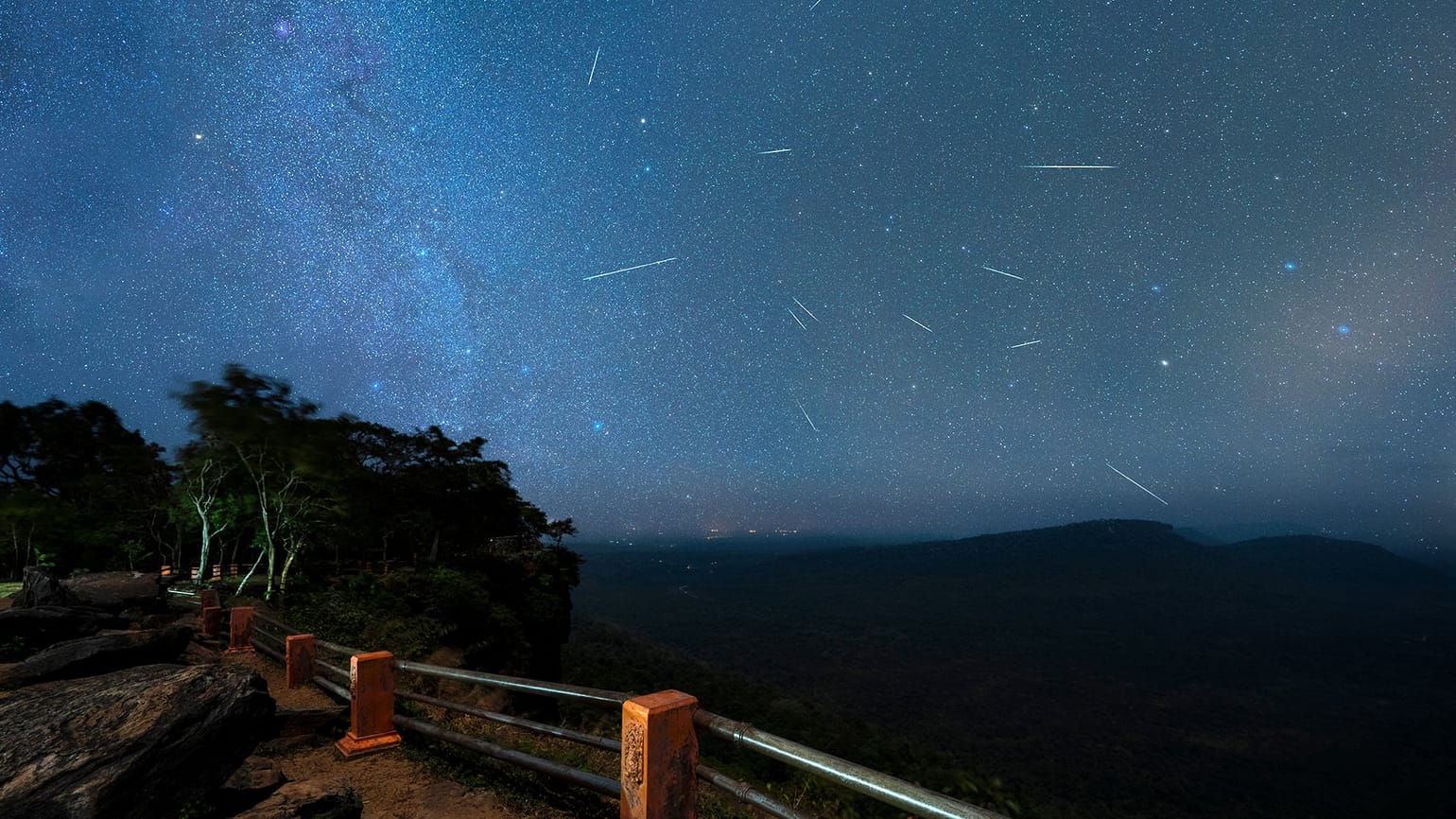
Prepare for celestial fireworks! The annual Aurigid meteor shower, a display of swift, bright streaks, will peak overnight from August 31 to September 1. This presents a prime viewing opportunity, especially for those in the Northern Hemisphere, to witness this relatively rare astronomical event. The Aurigids, known for their speed and occasional brilliance, promise a captivating spectacle for stargazers willing to brave the late-night hours.

Understanding the Aurigid Meteor Shower
The Aurigid meteor shower, also referred to as the Alpha Aurigids, is an annual occurrence resulting from Earth’s passage through the debris field left behind by Comet C/1911 N1 Kiess. As these tiny fragments enter Earth’s atmosphere, they ignite due to friction, creating the luminous trails we recognize as meteors or “shooting stars.” According to in-the-sky.org, the shower is active from late August to early September, specifically between August 28 and September 5.
What to Expect
While typically a minor shower, the Aurigids are distinguished by their fast and often bright meteors. In typical years, the Zenithal Hourly Rate (ZHR) is around 6 to 10 meteors per hour. These meteors enter the atmosphere at impressive speeds, estimated to be around 66-67 kilometers per second, as noted by Space.com. This high velocity contributes to their striking appearance.
When and Where to Watch
The peak viewing window for the 2025 Aurigid meteor shower is anticipated to be overnight from August 31 into the early hours of September 1. Experts suggest that peak activity will occur around 11:00 PM EDT on August 31 (03:00 GMT on September 1). TheSkyLive recommends optimal viewing conditions in the hours before dawn on September 1. A significant advantage for observers this year is the favorable lunar phase. With the Moon in its first quarter phase on August 31, it is expected to set around midnight, providing darker skies for observation later in the night. The meteors appear to originate from the constellation Auriga, giving the shower its name. Viewers in the Northern Hemisphere are best positioned to observe the shower, as the constellation Auriga rises higher in their night sky.
The Science Behind the Spectacle
Cometary Origins
The Aurigids occur because Earth’s orbit intersects with the trail of dust and small particles shed by Comet C/1911 N1 Kiess. This comet, according to Wikipedia, is a long-period comet, requiring approximately 2000 to 2100 years to complete one orbit around the Sun. Each year, as Earth traverses this ancient stream of debris, the particles enter our atmosphere and burn up, creating the visual display we observe.
Discovery and Research
The Aurigid meteor shower was first discovered by C. Hoffmeister and A. Teichgraeber on August 31, 1935. Today, scientific organizations like ESA’s Meteor Research Group and the NASA Ames Research Center/SETI Institute are actively involved in studying these events. These studies provide valuable insights into the composition and behavior of cometary debris, furthering our understanding of the solar system.
Maximizing Your Viewing Experience
Finding the Perfect Spot
To enhance your chances of witnessing the Aurigid meteor shower, it’s essential to find a dark location away from city lights. Light pollution can significantly diminish the visibility of meteors. Once you’ve found a suitable location, allow your eyes to adjust to the darkness for at least 20-30 minutes. This will improve your ability to see fainter meteors.
Looking in the Right Direction
While the meteors will appear to radiate from the constellation Auriga, they can appear anywhere in the night sky. However, focusing your gaze generally towards the east or northeast after midnight will increase your chances of spotting them. Remember to be patient, as the meteors can be quick and sometimes faint.
Aurigid Meteor Shower: A Rare Treat
While the Aurigids might not be as prolific as other well-known meteor showers, such as the Perseids or Geminids, they offer a unique opportunity to witness a relatively rare celestial event. The combination of potentially bright, fast meteors and favorable moonless conditions in the early morning hours makes this a worthwhile event for astronomy enthusiasts and casual skywatchers alike. CosmoBC encourages all to take advantage of this beautiful display.
The Broader Impact
The Aurigid meteor shower serves as a powerful reminder of our place within the vast cosmos. By observing these celestial events, we gain a deeper appreciation for the intricate workings of our solar system and the beauty of the night sky. Furthermore, these showers provide valuable data for scientists studying cometary material and the evolution of our solar neighborhood.
The Aurigid meteor shower, with its promise of swift and bright meteors, is a celestial event not to be missed. With favorable viewing conditions and a bit of patience, stargazers can witness a captivating display of cosmic fireworks. This year’s peak on August 31 offers a unique opportunity to connect with the wonders of the universe and appreciate the beauty of the night sky. So, find a dark spot, look up, and prepare to be amazed!

